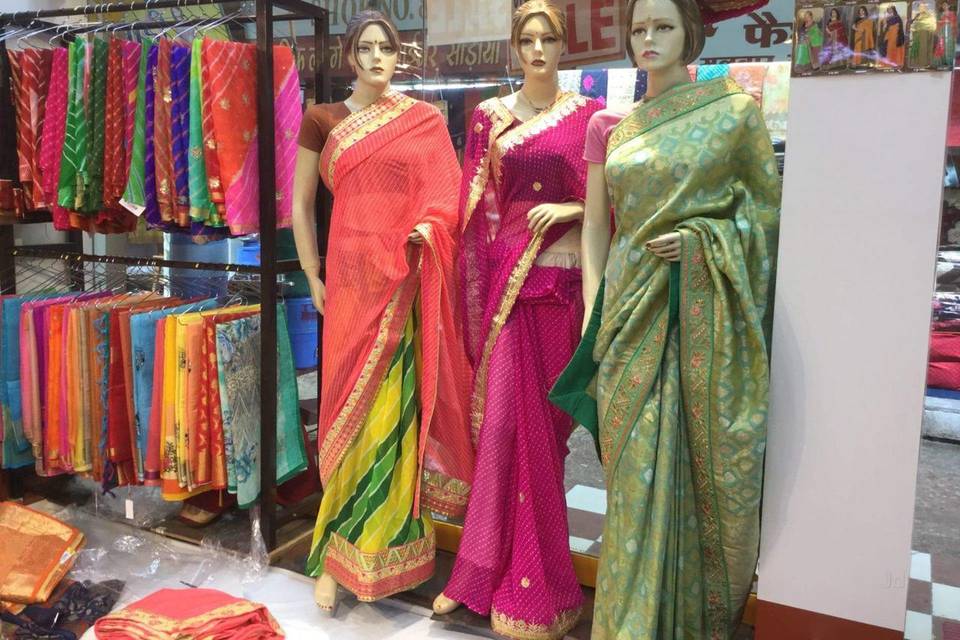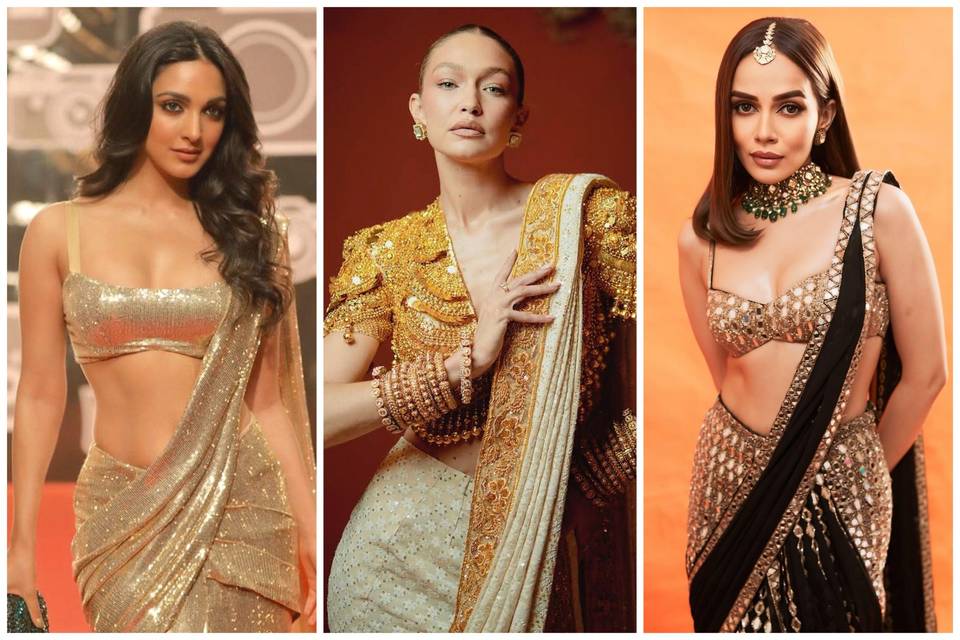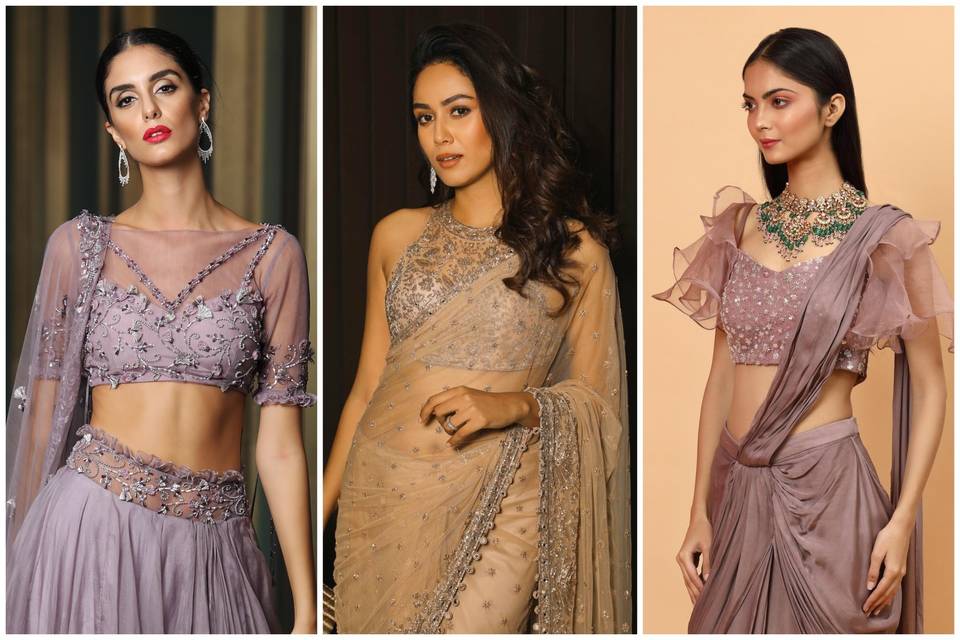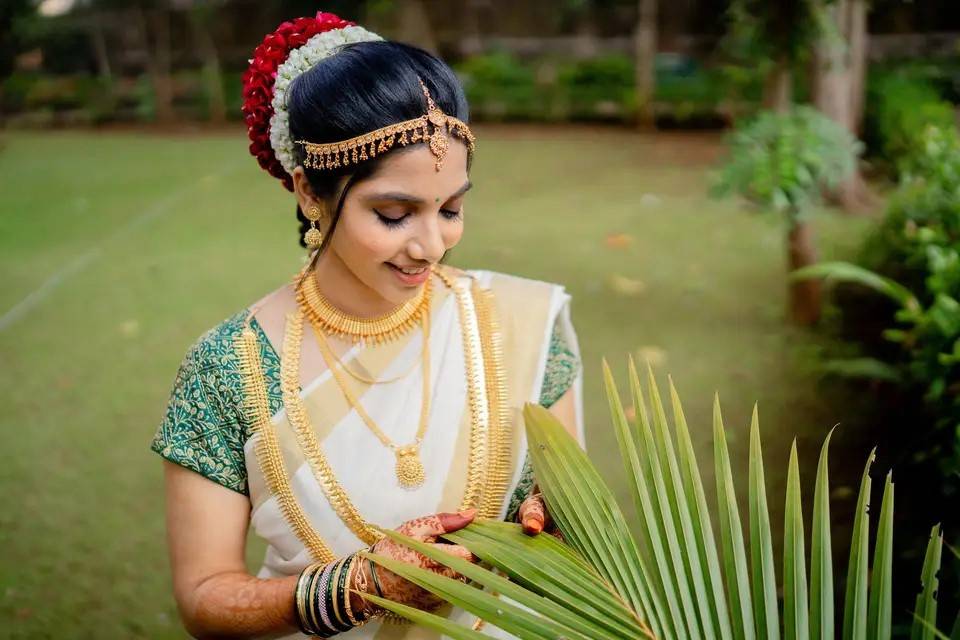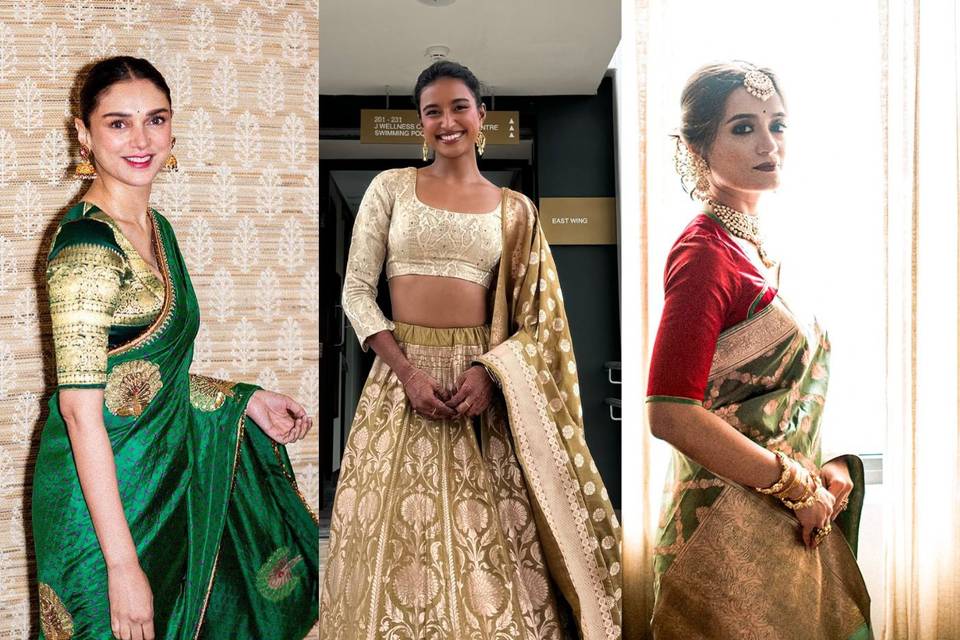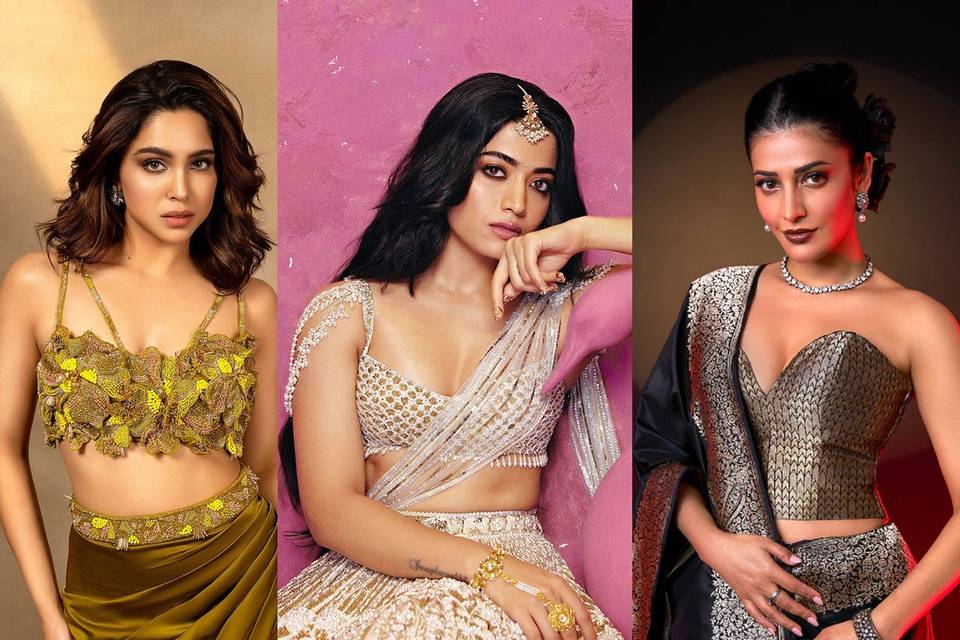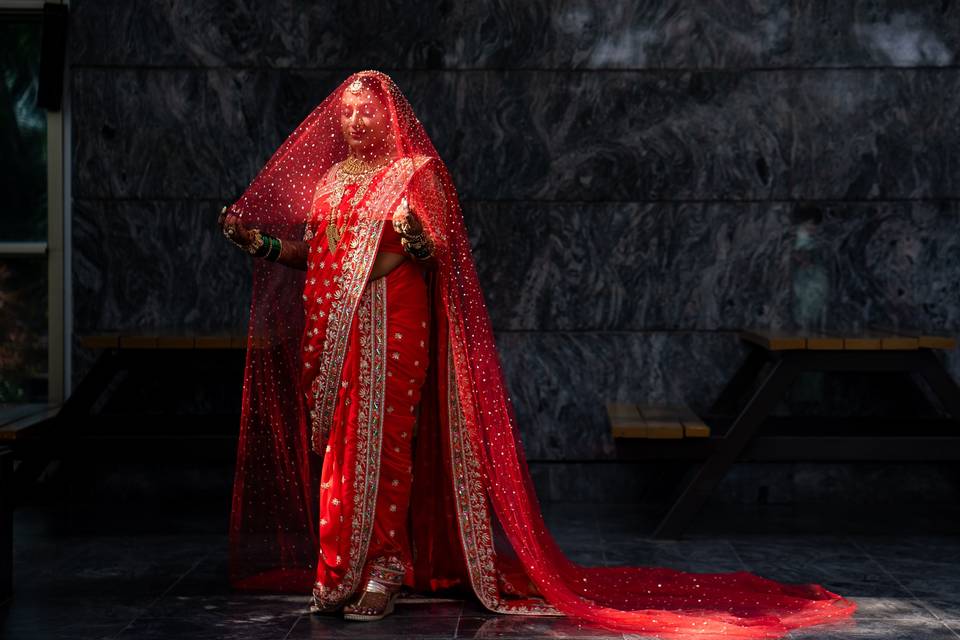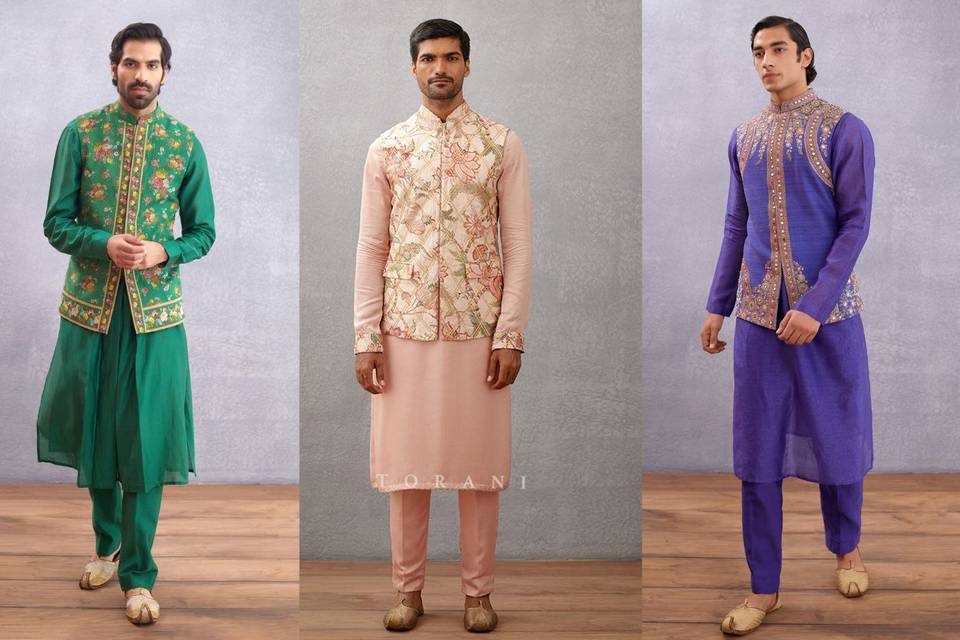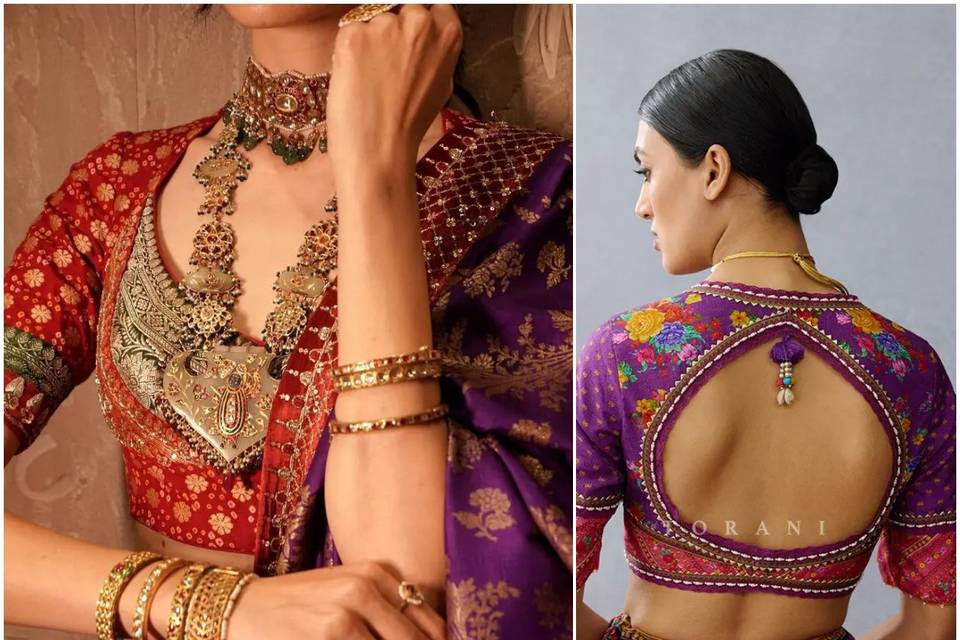All About Marathi Sarees: Styles, Drapes, and Accessories
We've curated a list of traditional sarees famous across Maharashtra, detailing their drapes and the perfect accessories to complement each style. Read here.


Photography: Stories by Parag
Do you know why traditional sarees are called classics? Because they always stay in style. Whether it is your wedding ceremony or events like Haldi or Sangeet, traditional Marathi sarees will be your trusted companions, always making you stand out. Their fabrics—silks, tasar, and cotton—offer something for every occasion.
Marathi sarees are not just limited to Paithanis and Kolhapuris; there is a diverse range of options. We've curated a list of traditional sarees famous across Maharashtra, detailing their drapes and the perfect accessories to complement each style.
Types Of Maharashtrian Traditional Sarees
Maharashtrian traditional sarees offer a wide variety, from the timeless Paithanis to the dhoti-style Nauvari sarees. You'll also find unique regional picks like Puneri, Kolhapuri, and Khun sarees, each with distinctive charm. Beyond Maharashtra, sarees like Uppada silk from Andhra Pradesh, Kunbi sarees from Goa, and Banarasi and Kota silks are beloved for their elegance. They're all perfect choices to add a touch of glamour to your special day. Let's explore these stunning Marathi saree options together.
3. Khun Saree
9. Ilkal Saree
10. Himroo Saree
11. Narayanpet Saree
12. Puneri Saree
13. Kunbi Saree
14. Kota Silk Saree
16. Kasavu Saree
Top Bridal Saree Stores in India
Paithani Saree

Photography: Stories by Parag
What is a Paithani saree?
Paithani is the quintessential traditional Marathi saree, and a Maharashtrian wedding is unimaginable without it. This delicate silk saree, hand-woven in Paithan in Aurangabad, is one of India's most culturally rich sarees. It's known for its vivid colours — from bright reds and yellows to dark greens and blues, each with unique charm. Maharashtrians do not shy away from bold colours, and neither should you! Choose a Paithani saree for a graceful bridal look.
What jewellery should you wear with a Paithani saree?
This classic Marathi saree pairs well with traditional jewellery, like layered gold necklaces. To enhance its appeal, you can wear jhumkas or big stud earrings. Your look will, of course, be complete with a traditional Maharashtrian Nath and Maang Tikka.
How do you wear a Paithani saree?
A Paithani saree is typically worn in the traditional Nivi drape. In this style, the saree is tied around the waist first, and then the pallu is worn over the left shoulder.
Uppada Silk Saree

Saree: Kalki Fashion
What is the Uppada silk saree?
This silk saree hails from a quaint beach town in Andhra Pradesh and enjoys widespread popularity in Maharashtra. It is woven using the intricate Jamdani technique and is adorned with pure zari. These sarees showcase finely detailed floral motifs, including large flowers and delicate stems. Traditional colours like green, red, and blue are typically sought after for Maharashtrian weddings. You can wear this Marathi saree for occasions like Mehendi and other intimate wedding festivities.
What jewellery should you wear with Uppada silk sarees?
Any jewellery with a tinge of colour would go well with this rich silk Marathi saree. You can wear antique gold jewellery for a traditional look or pearls for a more modern look. Add large jhumkas or chandelier earrings to complete the ensemble.
How do you wear Uppada silk sarees?
Uppada silk sarees are typically draped in the traditional Nivi style, where the saree is elegantly wrapped around the waist, with the pallu end cascading over the shoulder.
Khun Sarees
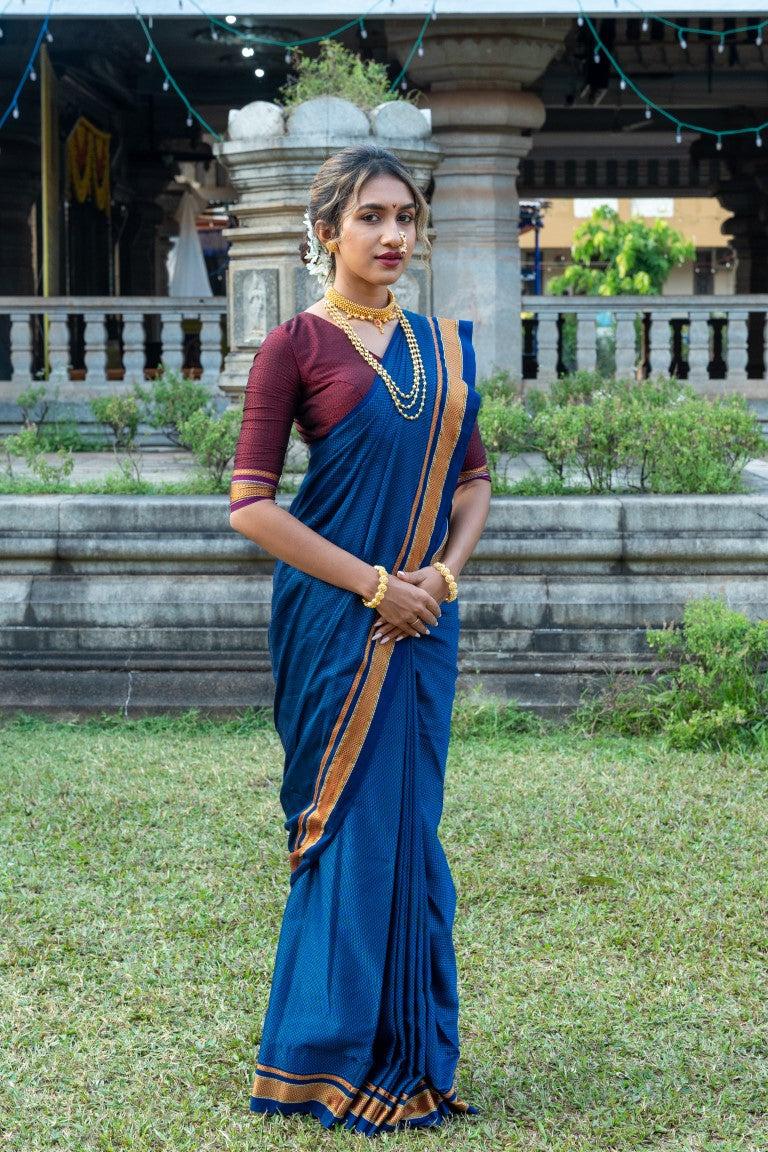
Saree: Cottons Daily
What is a Khun saree?
A Khun saree is a silk-cotton blended saree, typically featuring a cotton body with an art silk or pure silk pallu or border. Some variants include an art silk warp in the body along with a resham border. This soft, lightweight Marathi saree is perfect for the summer bride and a stylish choice for intimate wedding functions.
What jewellery to wear with Khun sarees?
Oxidised silver or gold jewellery goes best with Khun sarees. You can wear a statement neckpiece with a conventional Maharashtrian Nath to achieve the traditional vibe.
How to wear Khun sarees?
Khun sarees are typically draped in the classic Nivi style, with the pallu elegantly draped over the left shoulder.
Nauvari Saree

Saree: Cupcake Productions
What is a Nauvari saree?
Nauvari, or Kaashtha, is a nine-yard Marathi saree worn like a dhoti. It stands out due to its distinctive draping style. These sarees are available in fabrics like cotton, silk, or satin and come in various colours. You can wear a Nauvari saree at your wedding or other wedding ceremonies.
What jewellery to wear with Nauvari sarees?
Gold or antique gold jewellery pairs best with a Nauvari saree. You can opt for layered necklaces like the pearl Kolhapuri Saaj, a traditional Marathi Nath, Thushi, and Baju Band.
How to wear a Nauvari saree?
The Nauvari is the quintessential Maharashtrian drape. This nine-yard Marathi saree is draped in a dhoti style, offering mobility and a regal appearance. You must tuck the hind pleats in the centre back and drape the pallu elegantly over the left shoulder.
Kohlapuri Sarees
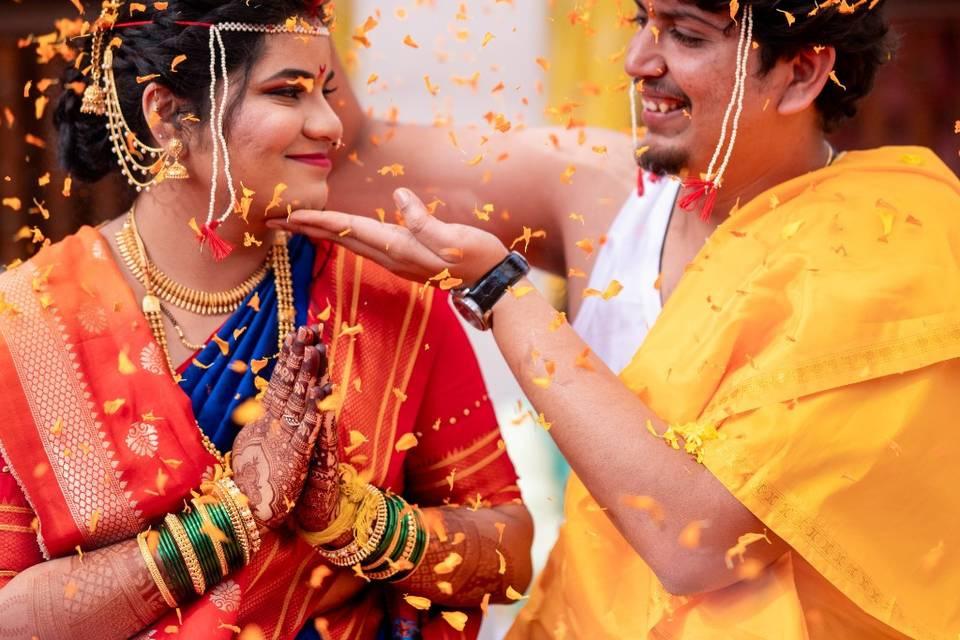
Photography: Pictales Production
What is a Kohlapuri saree?
This native Marathi saree is renowned for its bright, traditional colours. Although not as famous as the Paithani, the Kolhapuri saree is celebrated for its royal appearance. It often features intricate borders and motifs inspired by local art and culture, reflecting the rich heritage of Maharashtra's Kolhapur region. Wear this exquisite saree on your wedding day to make a statement!
What jewellery to wear with Kohlapuri sarees?
Layered descending necklaces complement this traditional Marathi saree beautifully. Pair it with gold jhumkas and ear chains to elevate the overall look.
How to wear a Kohlapuri saree?
A Kolhapuri saree can be worn in the usual saree draping style or the traditional Maharashtrian Nauvari style. Nauvari, a dhoti-style drape, involves tucking pleats at the back to create a dhoti look, with the front pleats arranged to showcase the border.
Kanjeevaram Silk Saree

Image Credit: Pinterest
What is a Kanjeevaram Silk saree?
This meticulously crafted pure mulberry silk, typically made in Tamil Nadu, is renowned for its impeccable quality and sheen. Kanjeevaram sarees, adorned with intricate zari work, often come in vibrant and bold colours or even elegant whites for special occasions. Wearing this exquisite saree, frequently hailed as the 'queen of sarees,' will make you feel truly regal.
What jewellery should you wear with Kanjeevaram Silk sarees?
You can complement this traditional adopted Marathi saree with jewellery that adds a pop of colour. Gold jewellery, including temple or Kundan jewellery, enhances its regal charm.
How to wear a Kanjeevaram Silk saree?
Begin by choosing the suitable petticoat for your silk saree. Tie your saree along your waist, tucking in the vertical pleats. Then, fix your pallu over your left shoulder and secure it with pins. Add finishing touches with adjustments in length and pleats, and you are done.
Banarasi Silk Saree
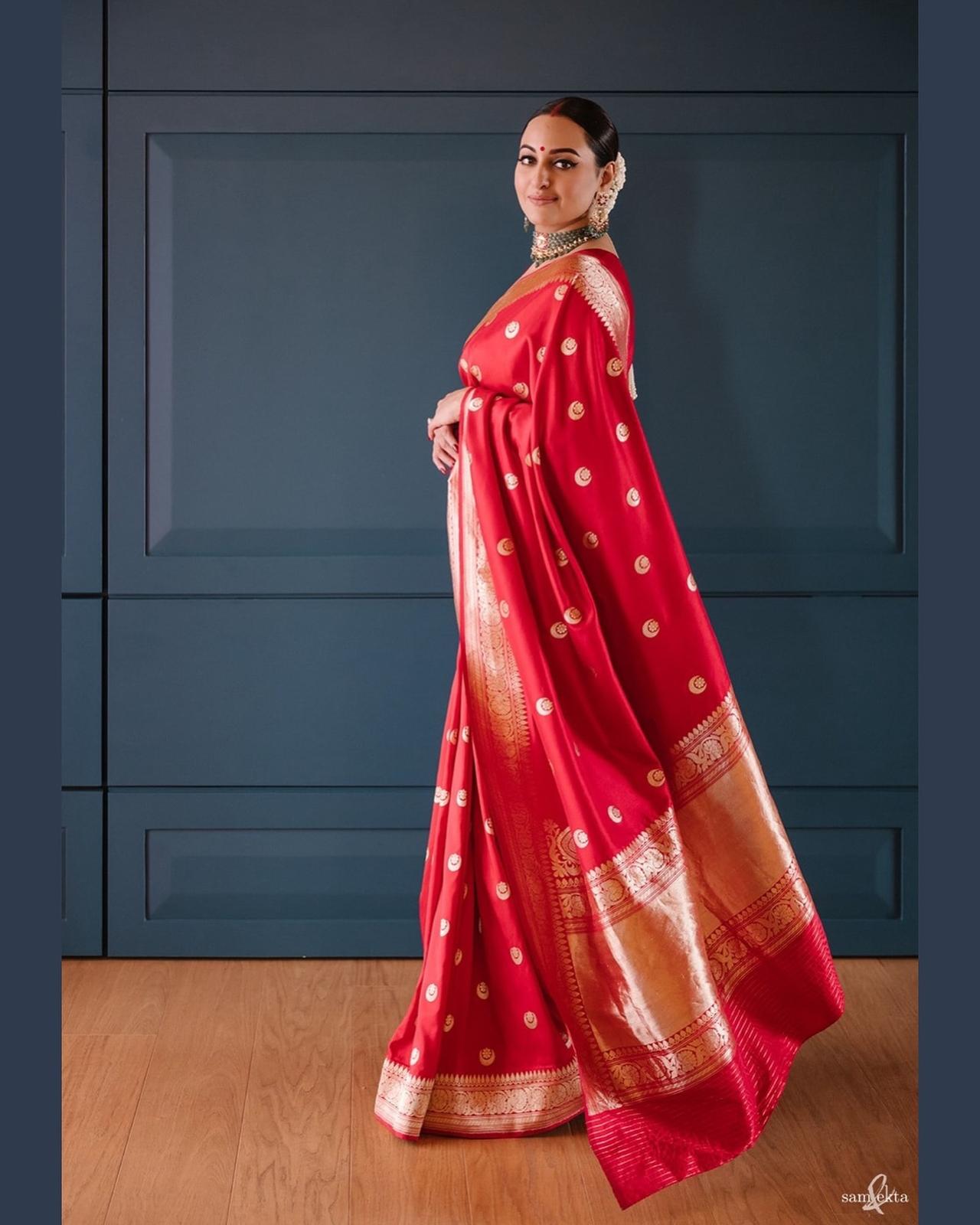
Photography: Sam & Ekta
What is a Banarasi Silk saree?
The Banarasi silk saree needs no introduction. This GI-tagged textile is among India's finest silks and a valuable investment. These sarees are woven with fine silk and adorned with intricate zari ornamentation. They stand out with Mughal-inspired design elements like intricate floral motifs such as kalga and bel. You can opt for bright-coloured Banarasi silks that’ll make you shine on your big day.
What jewellery should you wear with Banarasi Silk sarees?
Choker necklaces in gold or kundan work well with these adopted Marathi sarees. Pair them with matching stud earrings or jhumkas and a bun hair updo adorned with gajra for a striking traditional appearance.
How to wear a Banarasi Silk saree?
You can wear a Banarasi saree in a traditional Nivi drape. Or you can create multiple pleats and drape them like a skirt to create a lehenga-style saree look.
Karvati Sarees

Photography: Bindi Studio
What is a Karvati saree?
Karvati sarees feature distinctive border designs like saw tooth, hence their name. Originally from the Vidarbha region known for tasar production, woven tasar Karvati sarees are trendy in Maharashtra. They typically come in shades of beige, featuring tapestry weaving techniques with temple designs alongside the borders. You can wear this traditional Marathi saree for a casual day event.
What jewellery to wear with Karvati sarees?
Delicate jewellery such as simple necklaces, bangles, and studs or drop earrings complement these elegant sarees well. You can also wear oxidised jewellery for a more touch.
How to wear a Karvati saree?
Karvati sarees are draped in the traditional Nivi style, elegantly showcasing their unique border designs.
Ilkal Sarees
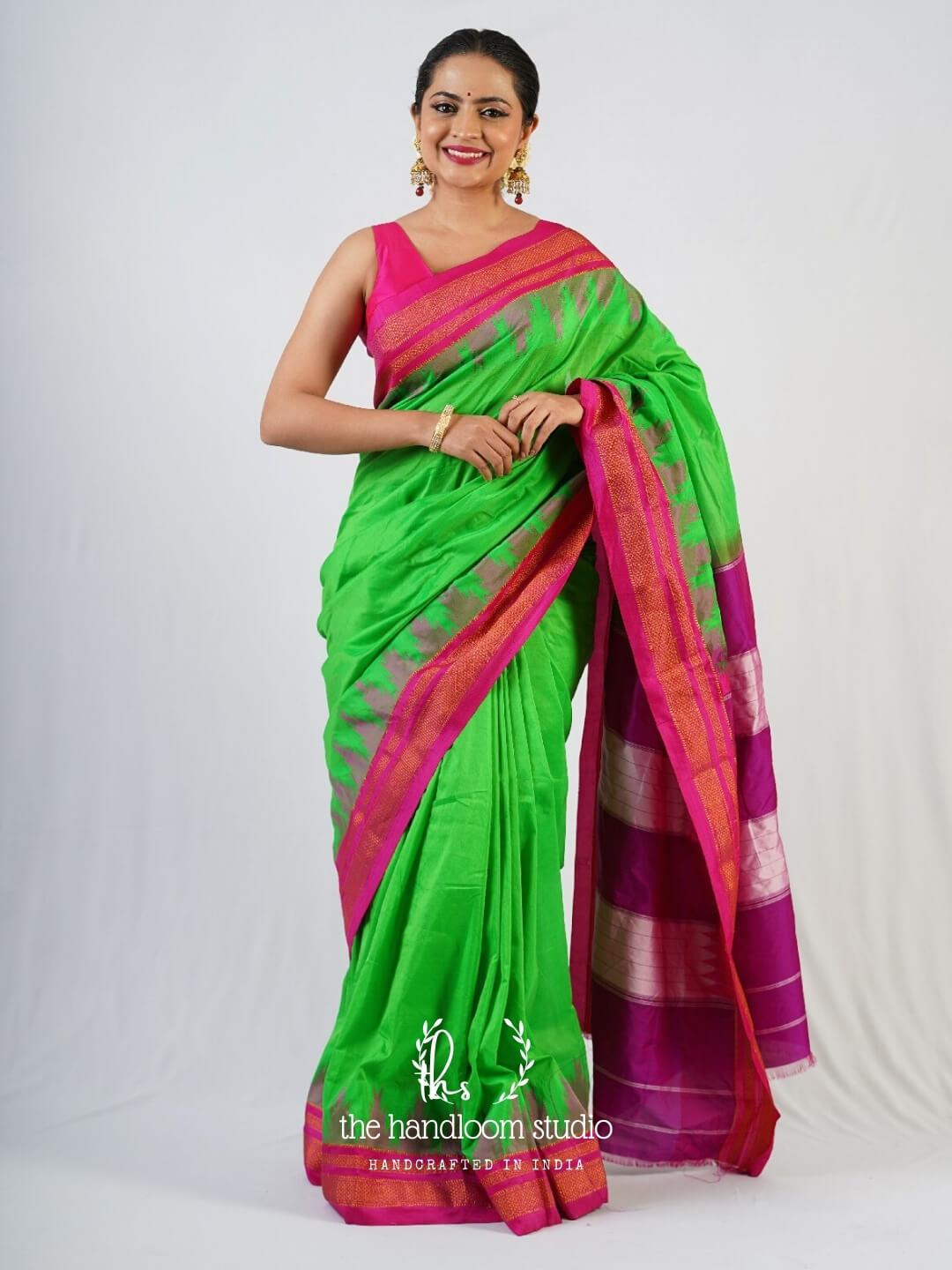
Saree: Only Paithani
What is an Ilkal saree?
Ilkal sarees originate from Ilkal town in Karnataka and are known for their vibrant colours and unique weaving techniques. These sarees have been a part of Karnataka's cultural fabric for generations. The pallu is traditionally woven with red and white temple blocks, featuring intricate temple designs that add to their elegance. These Marathi sarees are often chosen for their rich textures and are popular choices for wedding festivities.
What jewellery to wear with Ilkal sarees?
Simple jewellery, such as a pendant or a choker, will go well with Ilkal sarees. Jhumkas or chandbalis add to the charm, and glass bangles complete the look.
How to wear an Ilkal saree?
Ilkal sarees are usually draped in the traditional style with a pleated pallu. However, you can also choose an open pallu to showcase the vibrant designs.
Himroo Saree

Saree: Niram Neela
What is a Himroo saree?
This cotton-silk Marathi saree comes from Aurangabad. It resembles Kinkhwab, once woven with pure gold and silver threads for nobility and royal families. These handwoven traditional Maharashtrian sarees are prized for their exquisite style and royal sheen, with gold thread work on cotton silk lending them a satiny finish.
What jewellery to wear with Himroo sarees?
Opt for heavy, ornate jewellery if you wear a Himroo saree on your big day. You can choose from Kundan or Polki necklaces, chokers, and matching jhumkas.
How to wear a Himroo saree?
An open pallu or half-pallu drape is best with these Marathi sarees. It showcases the intricate gold work and opulence of Himroo sarees.
Narayanpet Sarees

Sarees: Uppada Sarees
What is a Narayanpet saree?
Narayanpet sarees, patronised during Shivaji Maharaj's reign, are renowned for their quality fabrics and durability. Originating from a small town bordering Karnataka and Andhra Pradesh, these handwoven sarees are crafted from cotton, silk, or a blend of both. This is if you want a simple and comfortable Marathi saree for your wedding festivities.
What jewellery to wear with Narayanpet sarees?
This simple saree will shine best with delicate necklaces and earrings. To elevate your ensemble, carry a bejewelled clutch.
How to wear a Narayanpet saree?
Narayanpet sarees are traditionally draped in the Nivi style. For special occasions, you can transform them into half sarees to highlight their traditional charm.
Puneri Saree

Sarees: Sohum Sutras
What is a Puneri saree?
This prominent Maharashtrian weave from Pune is perfect for your friend’s wedding festivities. Crafted using the warp and weft method, these sarees are usually plain, accentuated with a simple metallic zari border and temple work. This elegant Marathi saree dates back to the Peshwa empire and draws inspiration from the temple architecture of ancient Pune.
What jewellery to wear with Puneri sarees?
Gold jhumkas and short, ornate necklaces best complement this simple Marathi saree. Gold bangles complete the look.
How to wear a Puneri saree?
Drape the saree with pleats tucked at the waist's centre and wear the pallu over the left shoulder. An open pallu best showcases its elegant design.
Kunbi Sarees

Image Credits: Pinterest
What is a Kunbi saree?
This traditional saree, with the name derived from the indigenous Kunbi tribe, is an ode to the beautiful and culturally rich state of Goa. This handwoven saree typically features a plain body complemented by a vibrant pallu adorned with stripes and checks in red, blue, and green.
What jewellery to wear with Kunbi sarees?
Traditionally, Kunbi sarees were accessorised with black bead necklaces and glass bangles. For contemporary styling, you can wear this Marathi saree with dainty jewellery for daytime events and heavier chokers for evening occasions.
How to wear a Kunbi saree?
While traditionally worn in the calf-length Christian Kunbi drape for practicality in fieldwork, the Nivi drape is more commonly preferred today. Suitable for weddings and other celebrations, it showcases the saree's intricate patterns and vibrant colours.
Kota Silk Saree

Saree: Fabindia
What is a Kota Silk saree?
The Kota Silk saree, a traditional Rajasthani weave, is also popular in Maharashtra. It is known for its distinctive 'khat' or square checks and delicate weave, often adorned with traditional motifs. Its translucent weave lends it a light and breezy feel, making it ideal for daytime functions where the sun can shine through the fabric. This beloved Marathi saree is perfect for occasions like your friend’s Haldi ceremony or other intimate events.
What jewellery should you wear with Kota Silk sarees?
Dainty oxidised jhumkas and necklaces pair beautifully with Kota silk sarees. You can also wear pearl jewellery and a statement bracelet for a sophisticated look.
How to wear a Kota Silk saree?
To wear a Kota silk saree, wrap it around your waist, tuck it in neatly, and make pleats. Throw the pallu over your shoulder and secure it at the waist. This simple and comfortable drape style is perfect for daily wear!
Chanderi Silk Saree

Saree: Karagiri
What is a Chanderi Silk saree?
Chanderi silk sarees, known as the jewel of Madhya Pradesh, are celebrated for their lightweight and flowy texture. They are available in a spectrum of hues ranging from pastels to bold shades, admired not only in their native Madhya Pradesh but also widely loved in Maharashtra. These celebrated Marathi sarees may also feature intricate gold borders, adding to their allure and making them perfect for daytime wedding events.
What jewellery should you wear with Chanderi Silk sarees?
Complement the elegance of Chanderi silk sarees with gold jewellery, enhancing your look with richness and regality.
How to wear a Chanderi Silk saree?
Drape the Chanderi silk saree by tucking the pleats neatly at the front of your waist and pinning the pallu gracefully over your left shoulder.
Kasavu Sarees

Photography: Wedding Shots by Prateek
What is a Kasavu saree?
Kasavu sarees are traditional handloom sarees from Kerala, distinguished by their fine silver or gold zari borders woven on cotton or silk fabrics. The pristine combination of white and gold colours symbolises purity and elegance, making it a favoured choice not only in Kerala but also in Marathi weddings and other cultural events.
What jewellery to wear with Kasavu sarees?
This adopted Marathi saree looks best with layered gold temple jewellery, jhumkas and bangles.
How to wear a Kasavu saree?
The Nivi drape with a Kamar Band is famous for wearing Kasavu sarees, highlighting its traditional charm and simplicity.
Are you ready to rock your traditional Marathi saree at your wedding? We hope our list has helped you find the perfect one. When in doubt, opt for classics—they never disappoint.
As Maharashtrian traditional sarees go, these are the silks and ways to drape it, but as we go further to explore, there is no end to what kind of silk or drape we can or cannot use. But if ever in doubt, go for your classics because, as said before, nothing is more reliable than them.
Find More Maharashtrian Wedding Inspiration:
1. Decoding Maharashtrian Wedding


